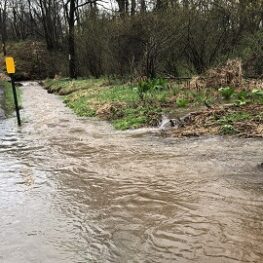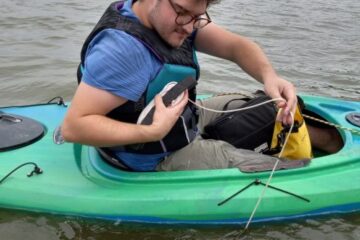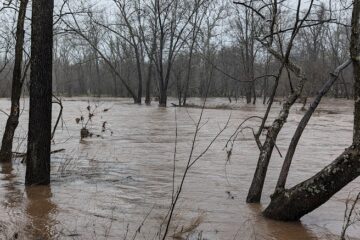 Recent storms have underscored with heartbreaking clarity how vulnerable our area is to the extreme weather that climate change is bringing.
Recent storms have underscored with heartbreaking clarity how vulnerable our area is to the extreme weather that climate change is bringing.
Only two weeks after the remnants of Hurricane Henri dumped heavy rainfall on the area, Hurricane Ida arrived with an even greater vengeance. Ida’s intense downpour overwhelmed stormwater systems never meant to handle so much water in such a short time. Amid flash flooding, lives were lost, residents had to be rescued by boat, vehicles and homes were ruined, and mud and debris covered the landscape.
The heavy rain and flooding also brought an increased risk of contaminated drinking water. Well water is particularly vulnerable to bacterial contamination after floods. Raritan Headwaters Association (RHA), immediately stepped up after Ida to help get well testing for residents concerned about contamination. An estimated 80 percent of residents in the Upper Raritan River watershed get their drinking water from privately-owned groundwater wells.
According to the state Department of Environmental Protection (DEP), extreme rainfall is expected to intensify in New Jersey in the coming decades. The Department just released two studies confirming that climate change brought increased rainfall to New Jersey over the last 20 years and will continue to do so through the end of the century.
The studies reveal that extreme rainfall amounts are about 2.5 percent higher now than in 1999, although some parts of the state have seen as much as a 10 percent increase. Precipitation is likely to increase by more than 20 percent above the 1999 baseline by 2100, with some regions getting hit harder than others. New Jersey’s northwestern counties are projected to feel the greatest impact, with as much as 50 percent increase.
How do we prepare for a warmer and wetter future? Raritan Headwaters is working to help protect the Upper Raritan watershed region and its drinking water supplies:
- In January, we will launch a four-year grant-supported project to plant 10,000 trees along North Branch Raritan River stream corridors. These trees will help prevent flooding by slowing down and absorbing stormwater and will filter out contaminants before reaching streams. In addition, RHA is currently involved in seven partnership projects to preserve 566 acres of critical lands along waterways.
- We will continue our decades-long practice of monitoring water quality in local streams. This fall, we are expanding our data collection by installing five climate stations at stream sites throughout the region to measure temperature, flow, and water quality in real time.
- Our River Friendly programs promote “green infrastructure” projects that utilize rain gardens and other nature-based solutions to help reduce polluted runoff and neighborhood flooding.
- RHA’s Well Testing program is in place to protect the public’s health. Well testing is always available to residents at our Bedminster and Flemington offices, and we partner with municipalities at spring and fall community events so that residents can drop off water samples within their own towns.
Each of us can play a part in reducing flooding and stormwater pollution by applying natural solutions on our own properties and by urging elected officials to make informed land use decisions that address the health of our community’s water supply. Forests, floodplains, and vegetated buffers go a long way in protecting us from major disaster during extreme rainfall.
Anyone wanting more information on actions that can be taken by individuals and towns to prevent stormwater runoff and protect water quality can visit www.raritanheadwaters.org/science-resources/.



